-
Content count
466 -
Joined
-
Last visited
Posts posted by coolrajiv
-
-
Happy B'day Rimweb .. 5 glorious yrs of success


-
Redesigned netbook now sports aluminum LCD cover.
Asus had recently shown to a select few publications what the Eee PC 1000H would look like. Well, now they have officially taken off the wraps from 1002HA, which is a replacement of 1000H with more aesthetic appeal.
The Eee PC 1002HA now sports a stylishly-designed chassis with brushed aluminum LCD cover and palm rest. The reason for going aluminum was to make the netbook as light as possible without giving away durability. The netbook now weighs 1.2 kg and is just 1-inch thick with the battery attached.
The specifications include a 10-inch LED backlit display, 1GB memory, which can be maxed up to 2GB, Intel Atom 1.6GHz processor, 160GB HDD, Wi-Fi, Bluetooth, 1.3 megapixel webcam, 4-in-1 card reader and Linux or Windows XP as the OS options.
Other noteworthy features are the included 10GB Eee Online Storage, keyboard that is 92% of the size of the conventional ones and is equipped with technology like Super Hybrid Engine (SHE) for better battery efficiency.
The Super Hybrid Engine, coupled with 4200mAh battery, gives a total run time of around 5 hours in a single charge.
Price & launch date will soon be announced..
-
hopefully BSNL will be offering 3G mobile broadband in Calcutta by Jan 2009.. waiting eagerly for it.
-
Finally India wins GOLD after 28 yrs

Congratulations to Abhinav Bindra!!


-
Lenovo has entered the netbook market with the IdeaPad S9 and S10 netbooks
The netbooks are approximately one inch thin and weigh just over two pounds.
The S9 has an 8.9-inch screen while the S10 has a 10.2-inch screen. Both models come in glossy deep blue, ruby red and classic black. Lenovo has designed the keyboard to be 85 percent the size of a full-function notebook PC's keyboard, and an energy-efficient LED backlit display helps provide longer battery life than traditional displays.
The netbooks feature Wi-fi and optional Bluetooth connectivity and also have an Express Card slot so users can enable the netbook for optional high speed mobile broadband connectivity. The netbooks feature a built-in web camera, two USB ports, a 4-in-1 multicard reader and come equipped with either Microsoft Windows XP or Linux.
The IdeaPad netbooks offer up to 1 GB of memory and either 80 GB or 160 GB hard disk drive space.
Lenovo has engineered the netbooks to reduce the heat emitted on key contact areas such as the bottom of the PC, the palm rest and the keyboard.
Additionally, Lenovo's OneKey Rescue System on Microsoft Windows-based netbooks helps users recover data at the touch of a button should a system error or virus occur.
The IdeaPad netbooks will be available in September in India at all Lenovo authorized storefronts, for approximately Rs. 15, 000 for the S9 and Rs. 17,000 for the S10.
-
HTC Diamond is the only one which is a big threat to Iphone & probably the only one which can take the limelight away from Iphone.
-
I dont see Idea Cellular in that list?
And can you send unlimited SMSes to a number... or is there a limit or something... or does the recipent have to reply after certain number of mails... like in Yahoo?
yeah the recipient has to reply just like it is in yahoo
-
Sagem has just launched a new entry level handset in India – the Bleu 453x. It’s quite loaded with essentials that most users would expect from their cell phones. This GSM/GPRS-enabled handset has a slim candy bar design and comes equipped with a 1.5-inch display with a 128 x 128 pixel resolution and 65k colors.
The 453x also has a host of other features that include Bluetooth with an A2DP profile for stereo Bluetooth headsets and a VGA camera with video recording. It also has an FM radio and an MP3 player. The integrated video player supports 3GP, AVI and Mp4 file formats. The phone also features a rather sophisticated Mobile Tracker application that allows users to block the handset by simply sending an SMS from another SIM and a whole lot more including formatting the phone book remotely.
The 453x supports the use of microSD cards for external memory.
The Sagem Bleu 453x is priced at Rs. 3,350 and will be available in 2 colors.
I think this is complete value for money handset
-
Bharti Airtel, India's largest mobile service operator, has reduced local, long-distance and roaming call charges effective from Wednesday.
The telecom operator, which announced an investment of $3.5 billion for strengthening its infrastructure, slashed STD rates to Re.1.50 per minute from the earlier Rs.2.65 a minute for both home area and roaming.
In its roaming tariffs the company also reduced incoming call charges to Re.1 a minute from the current Re.1.75 and outgoing local calls to Re.1 a minute, the company announced here Monday.
“This initiative has been taken to encourage people to make more calls while roaming. This would also immensely benefit our rural customers,” said Manoj Kohli, president and CEO, Bharti Airtel.
Bharti Airtel, in which Southeast Asia's leading telecom firm SingTel owns 30 percent stake, announced a robust 37 percent increase in its fourth quarter profit ending March 2008.
The company recorded 62 million customers by the end of last month.
Indian mobile phone firms added an unprecedented 10.2 million subscribers in March taking the total to 261 million.
-
nice info but u did not mention if it is CDMA or GSMIts GSM .. wah ashoksoft sounds cool just think & the call gets dialed

-
The Telecom Regulatory Authority of India (TRAI) has approved the pan-India implementation of Mobile Number Portability (MNP), and requested the Department of Telecom (DoT) to select an operator who will be licensed for providing and operating end-to-end MNP solutions in the country.
Further, TRAI has recommended that the 'Mobile Number Portability Clearing House Administrator' (MCHA) should select a neutral third party operator through a competitive bidding process. If all goes well, MNP will be implemented country wide by June 2009 in phases, with the first phase covering metros, as per TRAI recommendations.
With this, India will soon join the elite club comprising USA, UK, Australia, Korea, Japan, Canada, most of Europe, and Pakistan, who already offer number portability.
And when effective, those planning on using MNP, here's something you ought to know. In case of pre-paid mobile subscribers porting the mobile number having balance amount, no credit transfer will be allowed to the new account. Subscribers will have to either consume the balance amount or forgo it. Also, there will be a 'break before make' arrangement for completion of porting process i.e. connection from donor network to be disconnected first, and then connection with recipient network to be made. However, TRAI has asked to keep the break period not more than two hours.
According to some surveys, as many as half of the country's mobile phone users are unhappy with their service providers, and hence willing to switch operators if allowed to retain their existing numbers.
-
Nokia Launches New Handset With NFC
Nokia has introduced the Nokia 6212 classic featuring integrated Near Field Communication (NFC). The 3G handset has been designed to simplify sharing content, access services and information as well as conduct payments and ticketing.
"NFC-capable handsets such as the Nokia 6212 classic are set to change the way mobile phone users interact with devices and services in their surroundings," says Jeremy Belostock, the Head of Near Field Communications, Nokia. "With the Nokia 6212 classic, people can swap items like business cards or calendar notes by simply tapping their handsets together."
Near Field Communication is designed for intuitive, simple and safe interaction between electronic devices. By tapping an NFC-enabled tag, consumers can receive new content such as weblinks, audio files or contact data directly to their handset. They can activate a profile in their mobile or open applications such as the FM radio or web browser. Photos and videos can also be shared by tapping another NFC-capable phone and pairing with a Bluetooth NFC-enabled device. The Nokia 6212 classic allows consumers to personalize and edit their own NFC tags, be it for writing calendar entries or setting the alarm clock. The sales pack of the Nokia 6212 classic comes with three sticker tags, one of which opens the NFC introduction in the phone.
The Nokia 6212 classic can also be used as a travel ticket or for mobile payments. Travel tickets can be charged over the air, so there is no need to wait at the service counter. Users can store their credit card information on the device and access their account online directly from the handset. Using the Nokia 6212 classic for payment and ticketing purposes requires a service subscription and the installation of an appropriate secure application. Security for transactions is assured as the handset can be set to allow payment only when the user expressly authorizes the transaction via an additional passcode.
The 6212 classic also comes equipped with a 2 megapixel camera, a 2-inch QVGA display, stereo FM radio, music player and extra memory via microSD cards.
The Nokia 6212 classic is expected to start shipping in the third quarter of 2008 in select markets in Europe and Asia with an estimated retail price of Rs. 12,525 (EURO 200) before taxes and subsidies.
-
WELL routing from one end of sweden to another end using fiber cable is like routing from chennai start to chennai end. Think about india, ITS vast and most ppl are illeterate... Only in cities the connectivity really matters and one metre of cabling a simple twisted pair costs 100 rupees.... Shorter cables can give higher bandwidths... so it makes sense and market also is nascent here. Make hay while sun shines...........
well its your way mate of looking at the Indian market as for me i will say we here have Fraudband yeah u heard it right its Fraudband just in case people r wandering whats that its actually Broadband .. i mean come on 256 kbps u call that Broadband thats nothing but Fraudband
 .. India is nascent market no way .. India & Brazil started together to penetrate the market .. now just look where is Brazil now even there 2 mbps is standard.. here 256 kbps is standard
.. India is nascent market no way .. India & Brazil started together to penetrate the market .. now just look where is Brazil now even there 2 mbps is standard.. here 256 kbps is standard 
-
I think Broadband in India is a joke right now with the slow speeds, download limits and outrageous prices. The most frustrating is when a company comes up with a 4Mbps connection then says that you can only download 7.5GB a month. With a connection like that 7.5GB can be downloaded in 2 days! And the overage charges are way too much for it to make sense for anyone to go above the download limit. The only choice for even moderate downloaders seems to be the Reliance 1Mbps at Rs 2999.Just to contrast products on offer in the UK which is known to be very expensive for everything telecom and IT related. You can get an upto 16Mbps (ADSL 2+) unlimited downloads connection for 15 pounds (Rs 1200) a month! Ive actually used this connection and the speeds are constant around the 12Mbps mark.
I understand the limitations of our bandwidth infrastructure but major corporations such as Reliance and Bharti really should be able to offer more. Particularly since the connections are over fibre optics which do not hv the limitations of first gen ADSL.
haha don't even think of comparing Tariffs of India with European countries .. lemme give u an example that will shock every1.. In Sweden u get 10 mbps up/down only for 15 Euros thats roughly 900 rupees & in a certain area in Sweden its 50 Euros thats 3000 rupees for 75 mbps up/down unlimited .. In Copenhagen one of my close friend lives he has 100 mbps( 50 for IPTV , 25 for phone & 25 for internet connectivity) all this for only 70 Euros/month & we here in India r sulking with kb/sec download speed

-
I dont know what happened to BSNL, anyway thankyou!!I had been subscribed for 1X service for 250 PM - unlimited
just look at the screen shots, in which speed I am surfing!!!!!!!!!!
these are pretty impressive speeds for 1X service .. @ 250/pm this is more than value for money

-
Mobiles can be more cancerous than smoking
A new study by an Indian-origin neurosurgeon has shown that cell phone use could kill more people than smoking, because of its possible association with brain cancer.
Dr Vini Khurana, a staff specialist neurosurgeon at the Canberra Hospital and an associate professor of neurosurgery at the Australian National University, said heavy usage of mobile phones might turn out to be a greater threat to human health than smoking and even asbestos.
To support his finding, Khurana conducted a 15-month 'critical review' of the link between mobile phones and malignant brain tumours, and said that using mobiles for more than 10 years could result in more than double the risk of brain cancer.
In order to curb this danger, he has urged for 'immediate and decisive steps' by industry and governments to reduce people's exposure to invisible electromagnetic radiation emitted by handsets.
He has also asked to begin a 'solid scientific study' observing heavy mobile phone users for a period of at least 10-15 years.
'It is anticipated that this danger has far broader public health ramifications than asbestos and smoking, and directly concerns all of us, particularly the younger generation, including very young children,' the Sydney Morning Herald quoted Khurana, as saying.
However, he added that it is not that smoking was better for people than using mobile phones, but mobile-phone related health issues were a lot more dangerous and affected a far greater number of people.
He pointed out that currently there were 3 billion mobile phone users worldwide, and the number is growing with each passing day. In fact, people started using them as young as three.
He underlined that mobile phone radiation could result in heating up the side of the head or potentially thermoelectrically interact with the brain, while Bluetooth devices and 'unshielded' headsets could 'convert the user's head into an effective, potentially self-harming antenna'.
Khurana indicated that there had been increased reports of brain tumours linked with heavy and prolonged mobile phone use, particularly on the same side as the person's 'preferred ear' for making calls.
However, Chris Althaus, chief executive of the industry body, the Australian Mobile Telecommunications Association, rejected Khurana's conclusions, saying handsets were designed, built and tested to comply with strict science-based guidelines.
He also pointed out to a 2000 World Health Organisation fact sheet, which said no recent reviews had concluded that exposure to the radiofrequency fields from mobile phones and their base stations caused any adverse health consequences.
But this was denied by WHO, saying that there were 'gaps in knowledge' that required further research to better assess health risks, which would take several years to complete. Even Khurana said that the WHO fact sheet was irrelevant in this instance because 'most of the worrisome data has been surfacing in the last 12-24 months'.
Another fact sheet on the NSW Cancer Council's website said stressed for further research as not much was known on the long-term effects of electromagnetic field exposure.
Khurana said there is a time-gap of 10-20 years between the starting of regular mobile phone usage to the diagnosis of a malignant solid brain tumour. And the link between mobile phones and brain tumours had not yet been 'definitively proven' because widespread mobile phone usage started in the mid-1980s and solid tumours might take several years to form.
'In the years 2008-2012, we will have reached the appropriate length of follow-up time to begin to definitively observe the impact of this global technology on brain tumour incidence rates,' said Khurana.
However, he stressed that there was already enough evidence to warrant industry and governments taking immediate action to reduce mobile phone users' exposure to electromagnetic radiation and inform them of potential dangers.
'Worldwide availability and use of appropriately shielded cell phones and hands-free devices including headsets, increased use of landlines and pagers instead of current mobile and cell phones, and restricted use of cellular and cordless phones among children and adults alike are likely to limit the effects of this physically invisible danger,' said Khurana.
-
Nokia N810 gets WiMAX edition
Another N-series device is on the way to grabbing the hearts of fans. The Nokia N810 WiMAX edition is the upgraded version of the original Nokia N810 internet tablet. Yes, we know it's not a mobile phone, but it's sleek, it's fast, and it comes in black - just the right ingredients to make a geek drool.
Internet Tablets are not our specialty anyways, but we just couldn't miss to report the announcement of the WiMAX-enabled Nokia N810. Rumors about a new Nokia tablet started as soon as Nokia dropped the price of the original Nokia N810 not long ago, but no one knew details about the supposed new device.
The Nokia N810 WiMAX Edition doesn't bring any substantial upgrades to the original gadget except for three main points - it's black, it sports WiMAX connectivity (it's like Wi-Fi but follows the wider coverage principle of GSM networks), and finally it comes with the spanking new version of the Internet Tablet OS - the OS2008. The new OS will be available to owners of previous Nokia tablets for free somewhere in Q2 2008.
The Nokia N810 WiMAX Edition will be available in the summer of 2008 (at least in the USA that is).
-
Sprint to Sell iPhone-Like Device( Samsung Instinct)
Sprint Nextel Corp. on Tuesday said it is betting heavily on a touch-screen phone that appears to be the closest thing the U.S. market has seen to Apple Inc.'s vaunted iPhone.
The Samsung Instinct will be available in June for a yet undetermined price, Sprint announced at CTIA Wireless, a cell-phone industry trade show in Las Vegas. Executives hinted that the price would be substantially lower than the $399 for the cheapest iPhone.
Sprint, which has been losing subscribers, will spend $150 million to advertise the Instinct when it launches, compared with $30 million for a typical product introduction, according to David Owens, the company's director of devices.
Like the iPhone, the Instinct lacks a keypad and has just a few buttons. Most of the functions are accessed by touching the screen.
A few touch-screen phones appeared on the U.S. market last holiday season, after the iPhone's debut in June.
Verizon Wireless launched the LG Voyager, which has an exterior touch screen and folds out to reveal a non-touch screen paired with a keyboard. Sprint introduced the Touch by HTC, a slim pad with only a touch screen.
Both phones were hampered by the lack of software designed specifically for a touch screen. The Voyager dealt with that by adding a keyboard. The Touch grafted some touch-friendly features on to Microsoft Corp.'s Windows Mobile operating system, which is designed for smart phones that either lack a touch screen or are intended for use with a stylus. Some functions on the Touch are hard or impossible to use by tapping with the fingers alone.
The Instinct is based on a Samsung phone that's already available under different names, and with different software, in South Korea and Europe. Sprint commissioned its own software from European design house Icon Mobile.
"We took a more active part than we ever have" in a phone's development, Owens said. "This was designed from the ground up to be a touch-screen phone."
The software is based on Java, a commonly used programming language that should make it easy to develop applications for the phone.
The Instinct will have a few features the iPhone lacks. For one, it will be the first consumer phone in the U.S. to use EV-DO Rev. A, the fastest cellular broadband technology available on the Sprint and Verizon Wireless networks.
AT&T Inc. has phones that use a competing technology with equivalent speeds, but the iPhone is not one of them: It runs on a comparatively slow network, supplemented by Wi-Fi access.
The Instinct also contains a Global Positioning System chip, for location applications. The iPhone lacks one, but it can use cellular and Wi-Fi signals to determine an approximate position.
The Instinct's screen measures 3.1 inches diagonally, compared with the iPhone's 3.5 inches.
The Instinct won't be able to take input from more than one finger at a time: The iPhone's characteristic "pinch to zoom out, spread to zoom in" feature won't work. Sprint compensates for this by using the phone's motion sensor. In a demonstration of a prototype, tilting the phone while holding a button made a Web page scroll.
-
FCC Outs Moto With CDMA Direct Connect
The FCC recently approved the unannounced Motorola V950, the company's first phone to support Sprint's forthcoming CDMA Direct Connect push-to-talk technology. The high-end clamshell phone sports EVDO Rev. A data, camera with flash, Bluetooth, microSD memory card slot, and large external display with music controls.
-
8 inches Entry Level Laptop from Sahara
Sahara Computers has expanded its Book Series laptops with the entry-level 8-inches model S-NB522434-EB00. Though entry-level, the laptop is feature-rich and affordable, claims Sahara.
All of 1.1kg, the notebook, according to Sahara, qualifies as one of the smallest in its class. Significant features include a 60GB hard drive and an 8-inches TFT LCD display. The S-NB522434-EB00 is a Linux-based, Wi-Fi enabled notebook targeted at entry-level users, students, and frequent travelers. It comes with an AMD Geode LX 800 processor, a PCMCIA slot, and an extended battery life of 4-and-a-half hours.
Speaking at the launch, George Van Der Merwe, chief operating officer of Sahara Computers, expressed the view that unlike other notebooks in the same segment, this one comes with a hard drive and offers more features.
The S-NB522434-EB00 is immediately available through Sahara's authorized channel partners as well as ITJ stores for a MRP of Rs 14,999 plus taxes. It comes encased in a leather carry bag, and enjoys a one-year carry-in warranty.
-
Transcend Launches Classy 16GB Flash Drive
Transcend has announced the availability of its new high-capacity USB flash drive – the 16GB JetFlash V85 in India. It has a sleek, compact zinc-alloy body and measures 49.5mm long by 15.8mm wide and is 7.4mm thin. Each JetFlash V85 comes with a metal carrying chain.
Austin Huang, Regional Head - Sales, SAARC and APAC, Transcend, said, "Users have an impending need for enhanced storage capacity, as they like to carry around all their personal and office documents, music, images and videos for easy sharing and reliable accessibility. Transcend's new JetFlash V85 will cater to this requirement with its huge capacity of 16GB and classy look!"
The JetFlash V85 also comes bundled with Transcend's handy JetFlash elite software package that includes seven tools specifically developed to help you manage mobile data more efficiently and increase productivity. These functions include: Website AutoLogin, PC-Lock, Favorites, Secret-Zip, E-mail, DataBackup, and Online Update. The JetFlash V85 supports Windows 98SE/2000/Me/XP/ Vista, Mac and Linux, and is now available in 2GB, 4GB, 8GB and 16GB capacities. It's Hi-Speed USB 2.0 compliant, compatible with USB1.0/1.1 Easy Plug and Play.
The JetFlash V85 16GB is available in stores and priced at an MRP of Rs. 4,250.
-
Dell is offering a Blu-ray laptop, the Inspiron 1525, for under $1000.
Available from today on dell.com, movie buffs can pick up the laptop with optional Blu-ray disc playback starting at $879.
The Inspiron 1525 laptop features a 15.4-inch high definition wide aspect display with 720p resolution. It also includes an HDMI port for easy connectivity to high resolution displays and HDTVs.
The Blu-ray player disc drive is fully backwards compatible, and will play as well as burn traditional DVDs and CDs. Consumers can also choose a Blu-ray burner drive for backing up and storing important files like digital photos, videos, financial records, etc. A Blu-ray disc can hold up to 50 GB of data, vs. 8.5 GB available on the typical DVD disc.
The Inspiron 1525 offers designs like Chill, Blossom and Commotion, in colors like Sunshine Yellow, Midnight Blue and Ruby Red.
Dell Inspiron 1525 laptops with Blu-ray disc drives incorporate Broadcom Media PC technology that allows PCs with integrated graphics to play high definition video. The high-definition video playback is enabled through a built-in dedicated accelerator located in a mini-card slot.
The Inspiron 1525 features Dell MediaDirect technology, which provides one button instant access to media files, even if the system is powered off or in hibernation mode. Optional accessories include a slim travel power adapter ($80), Dell travel remote control that slips into the ExpressCard slot ($22), and Creative noise-isolation earphones ($25).
As of now the Inspiron 1525 laptop with Blu-ray is in the U.S., Canada and Europe, but let's hope with the tie-up with Croma we get to see this laptop here pretty soon.
-
Transcend Launches 32GB Flash Drive
Transcend has announced the availability of its latest high-capacity USB flash drive - the 32GB JetFlash V60 in India. Transcend is the first brand selling pen drives with such a large capacity in such a small device in India.
The JetFlash V60 has dimensions of 61mm x 18.6mm x 9.8mm. The JetFlash elite software suite can be installed to run directly from the JetFlash drive when plugged in. It also includes seven timesaving data management functions, including, Website AutoLogin, PC-Lock, Mobile Favorites, Secret-Zip encryption, Mobile E-mail, DataBackup and Online Update. The V60 also supports Windows 98SE / Me / 2000 / XP / Vista, Mac and Linux. Of course it’s Hi-Speed USB 2.0 compliant and also compatible with USB1.0/1.1.
This high capacity pen-drive is available in an assortment of bright, pearl-accented colors. It is also now available in 1GB, 2GB, 4GB, 8GB, 16GB and 32GB capacities. Transcend also offers its 3 year warranty.
The JetFlash V60 is priced at Rs. 7,300 (MRP)
-
I wish all the members of Rimweb a very happy Holi
Enjoy it but you can enjoy more with Herbal colors

cheers
rajiv

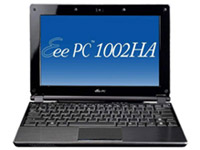

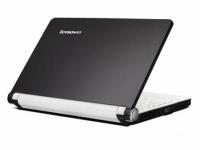
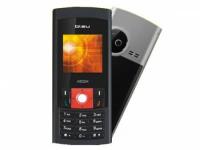
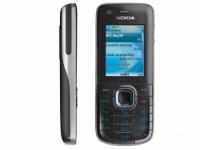
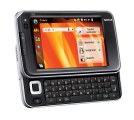
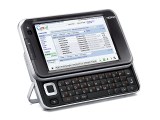
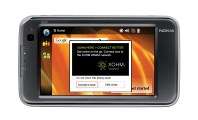
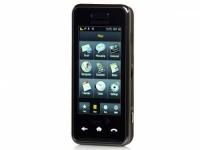
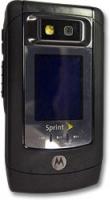
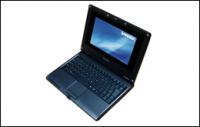
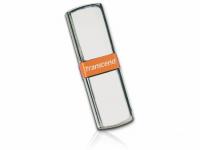

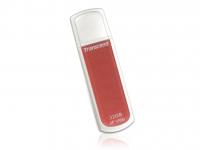
Zylog Systems Plans To Make Chennai Wifi Enabled
in Other Broadband Discussion
Posted · Report reply
Zylog Systems plans to make Chennai WiFI-enabled, allowing laptop users in the city access to the Internet from anywhere, including a moving vehicle.
The company plans to dot Chennai with WiFi nodes — electronic devices often kept on the top of buildings — which will tap data from optic fibre cables and transmit them to laptops and computers that will be equipped with a receptive device.
“By doing away with cables in the last mile of connectivity, we not only ensure high speed and seamless connectivity but also the ability to tap into devices such as laptops, hand-held devices and gaming consoles,” said S. Ram managing director of Zylog Systems. The company launched the Wi5 plan in the city on Sunday.
Zylog plans to launch the service within the next two years in Calcutta and elsewhere. At present, five areas are covered by Wi5 in Chennai. The entire city will be covered within 15 months.
“Our packages will be priced very competitively at Rs 550 per month for an unlimited plan at a download speed of 1 MbPS (megabytes per second), Rs 1,000 at 2 MbPS and Rs 1,750 at 4 MbPS,” said Jankiraman, Zylog’s chief operating officer.